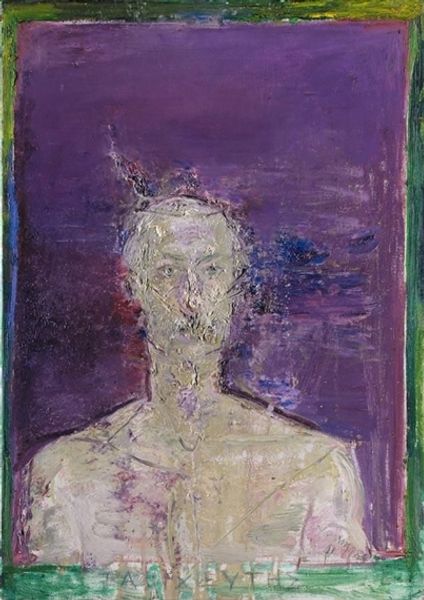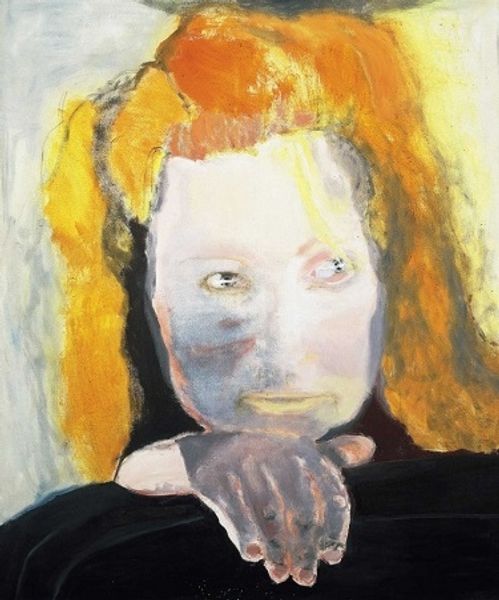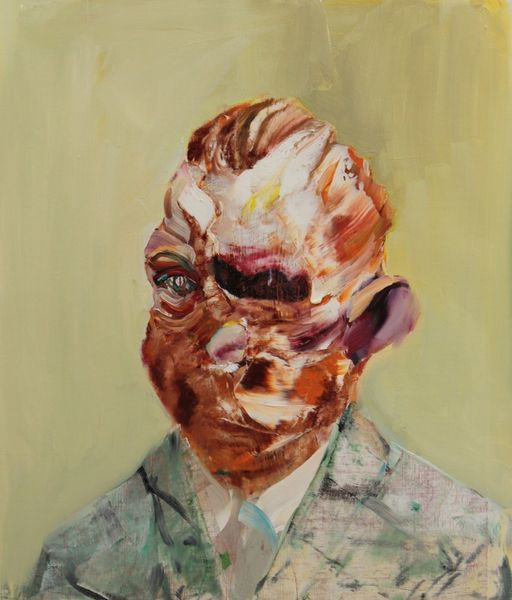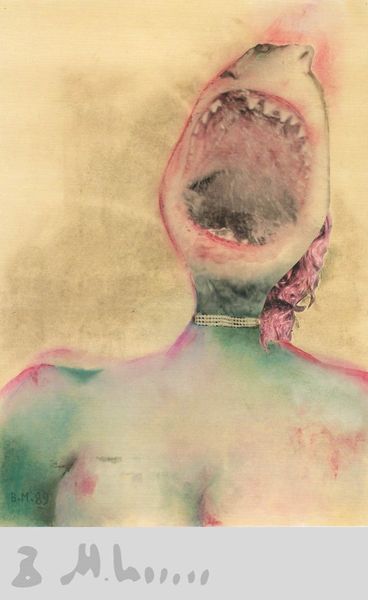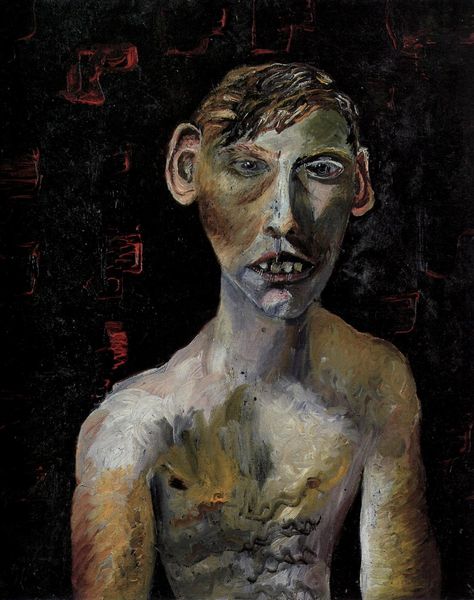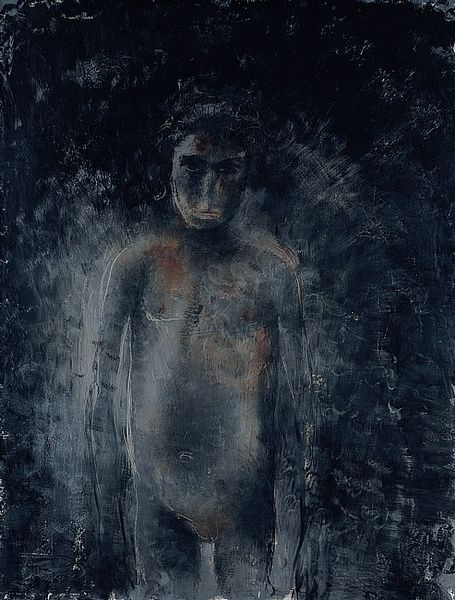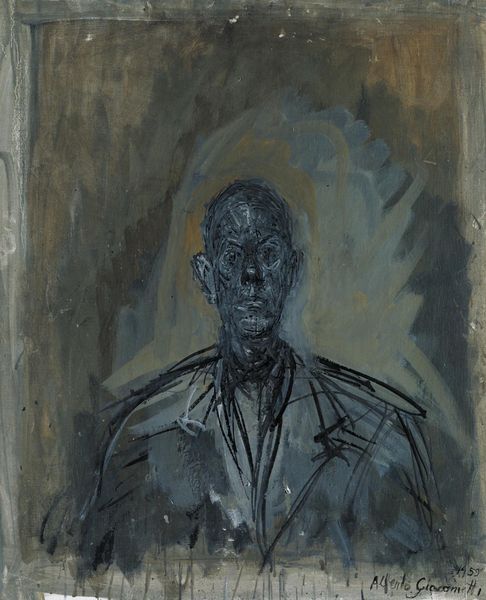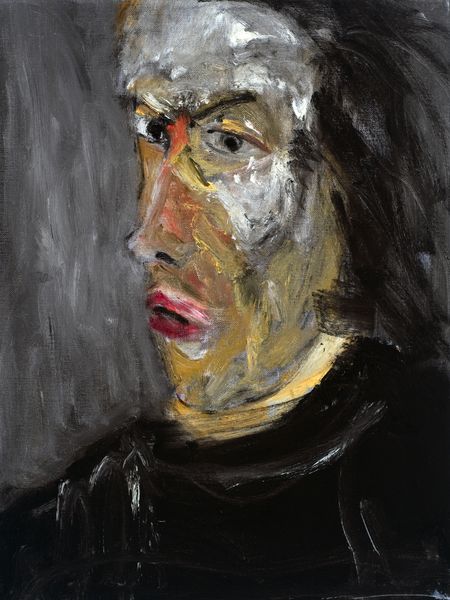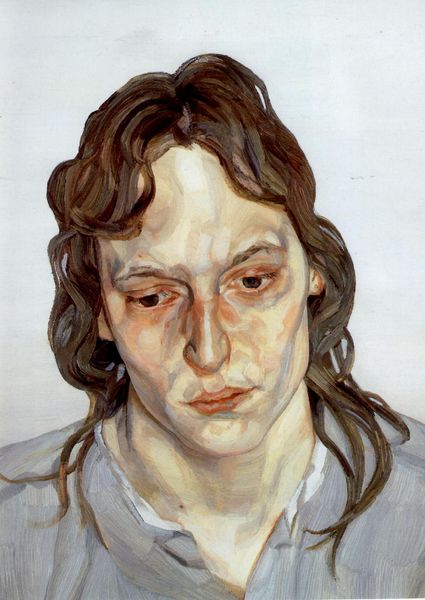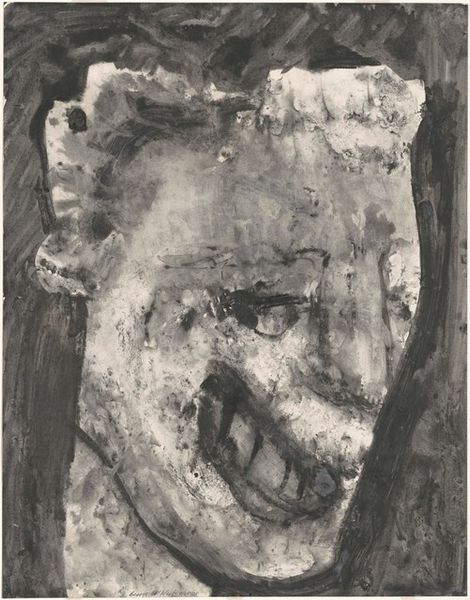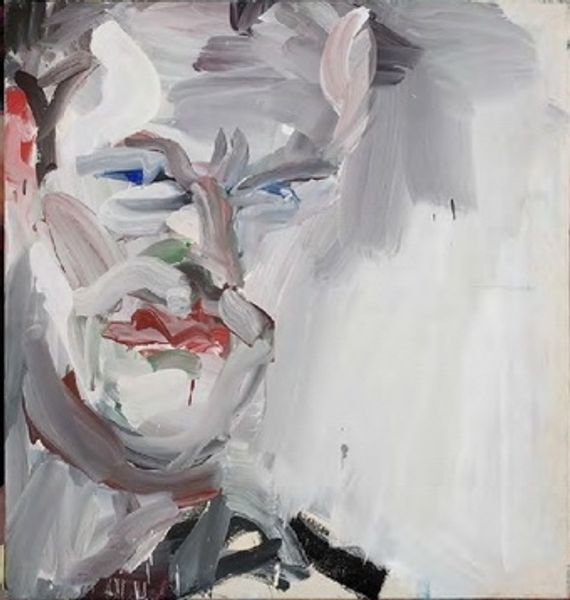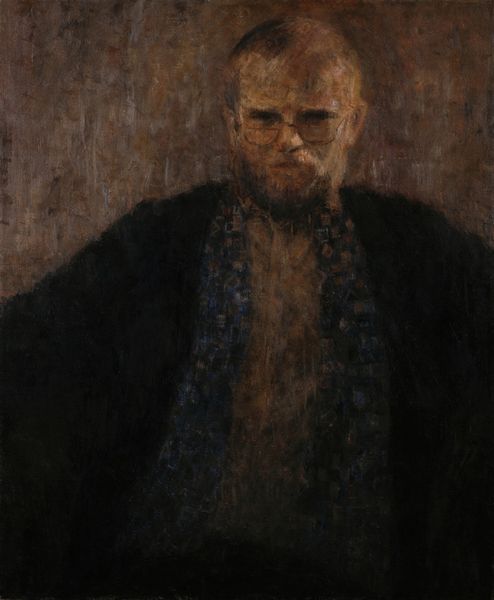
Copyright: Marlene Dumas,Fair Use
Curator: Here we have Marlene Dumas' 1985 oil painting, "The White Disease." It's an evocative example of her neo-expressionist style, focusing on a portrait. Editor: Haunting! My initial feeling is one of profound sadness, even alienation. The paleness is almost spectral. It’s like a ghost trying to materialize through layers of grief. Curator: The title certainly leans into that spectral interpretation, doesn't it? Dumas often explores themes of mortality, vulnerability, and societal illness in her work. This image carries the weight of those concerns through its symbolism. Notice how the face lacks clear definition, as though obscured or fading. The symbolic implications of a figure fading are profound. Editor: Exactly! That lack of clear definition unsettles me. And those eyes – so bright, almost electric blue – pierce through the pallor. It's a very unnerving contrast that draws the viewer closer, against their own better judgment. Curator: Indeed, the choice of such vibrant eyes set against such an achromatic face introduces tension and drama. From my point of view, the choice underscores the contrast that speaks volumes about humanity's capacity for both fragility and endurance. It prompts contemplation about our emotional vulnerabilities, echoing sentiments rooted in a past culture, memory, and fear. Editor: Perhaps she wanted us to confront the fragility of identity, too. How easily we can be "infected" or altered by life’s circumstances, fears, societal pressures. Curator: Absolutely. As an exemplar of the expressionist art movement, “The White Disease” urges us to probe deeper meanings and messages behind it. The face in itself holds memories of earlier artistic approaches on one hand, and introduces new ways of representing existential human condition in our times. Editor: This canvas whispers secrets best not told! Even as someone intimately familiar with Dumas' style, there's a depth here that goes straight to the bone. The overall image embodies melancholy and mystery! Curator: It seems to me that, in the end, Dumas gifts us not answers but prompts for contemplation on how the past continues to exist. Editor: Precisely! Thanks for sharing that perspective; now I will definitely return here again for deeper musings!
Comments
No comments
Be the first to comment and join the conversation on the ultimate creative platform.
